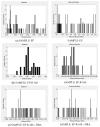Nanoindentation Response of Structural Self-Healing Epoxy Resin: A Hybrid Experimental-Simulation Approach
- PMID: 39000703
- PMCID: PMC11244422
- DOI: 10.3390/polym16131849
Nanoindentation Response of Structural Self-Healing Epoxy Resin: A Hybrid Experimental-Simulation Approach
Abstract
In recent years, self-healing polymers have emerged as a topic of considerable interest owing to their capability to partially restore material properties and thereby extend the product's lifespan. The main purpose of this study is to investigate the nanoindentation response in terms of hardness, reduced modulus, contact depth, and coefficient of friction of a self-healing resin developed for use in aeronautical and aerospace contexts. To achieve this, the bifunctional epoxy precursor underwent tailored functionalization to improve its toughness, facilitating effective compatibilization with a rubber phase dispersed within the host epoxy resin. This approach aimed to highlight the significant impact of the quantity and distribution of rubber domains within the resin on enhancing its mechanical properties. The main results are that pure resin (EP sample) exhibits a higher hardness (about 36.7% more) and reduced modulus (about 7% more), consequently leading to a lower contact depth and coefficient of friction (11.4% less) compared to other formulations that, conversely, are well-suited for preserving damage from mechanical stresses due to their capabilities in absorbing mechanical energy. Furthermore, finite element method (FEM) simulations of the nanoindentation process were conducted. The numerical results were meticulously compared with experimental data, demonstrating good agreement. The simulation study confirms that the EP sample with higher hardness and reduced modulus shows less penetration depth under the same applied load with respect to the other analyzed samples. Values of 877 nm (close to the experimental result of 876.1 nm) and 1010 nm (close to the experimental result of 1008.8 nm) were calculated for EP and the toughened self-healing sample (EP-R-160-T), respectively. The numerical results of the hardness provide a value of 0.42 GPa and 0.32 GPa for EP and EP-R-160-T, respectively, which match the experimental data of 0.41 GPa and 0.30 GPa. This validation of the FEM model underscores its efficacy in predicting the mechanical behavior of nanocomposite materials under nanoindentation. The proposed investigation aims to contribute knowledge and optimization tips about self-healing resins.
Keywords: epoxy resin; mechanical properties; nanoindentation; self-healing.
Conflict of interest statement
The authors declare no conflicts of interest.
Figures




























References
-
- Branda F., Parida D., Pauer R., Durante M., Gaan S., Malucelli G., Bifulco A. Effect of the Coupling Agent (3-Aminopropyl) Triethoxysilane on the Structure and Fire Behavior of Solvent-Free One-Pot Synthesized Silica-Epoxy Nanocomposites. Polymers. 2022;14:3853. doi: 10.3390/polym14183853. - DOI - PMC - PubMed
-
- Passaro J., Bifulco A., Calabrese E., Imparato C., Raimondo M., Pantani R., Aronne A., Guadagno L. Hybrid Hemp Particles as Functional Fillers for the Manufacturing of Hydrophobic and Anti-Icing Epoxy Composite Coatings. ACS Omega. 2023;8:23596–23606. doi: 10.1021/acsomega.3c01415. - DOI - PMC - PubMed
-
- Righi C., Barbieri F., Sgarbi E., Maistrello L., Bertacchini A., Andreola F.N., D’angelo A., Catauro M., Barbieri L. Suitability of Porous Inorganic Materials from Industrial Residues and Bioproducts for Use in Horticulture: A Multidisciplinary Approach. Appl. Sci. 2022;12:5437. doi: 10.3390/app12115437. - DOI
-
- Vertuccio L., Guadagno L., D’Angelo A., Viola V., Raimondo M., Catauro M. Sol-Gel Synthesis of Caffeic Acid Entrapped in Silica/Polyethylene Glycol Based Organic-Inorganic Hybrids: Drug Delivery and Biological Properties. Appl. Sci. 2023;13:2164. doi: 10.3390/app13042164. - DOI
Grants and funding
LinkOut - more resources
Full Text Sources

